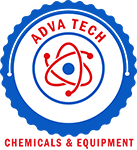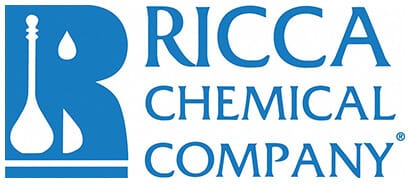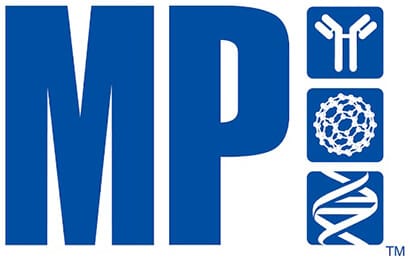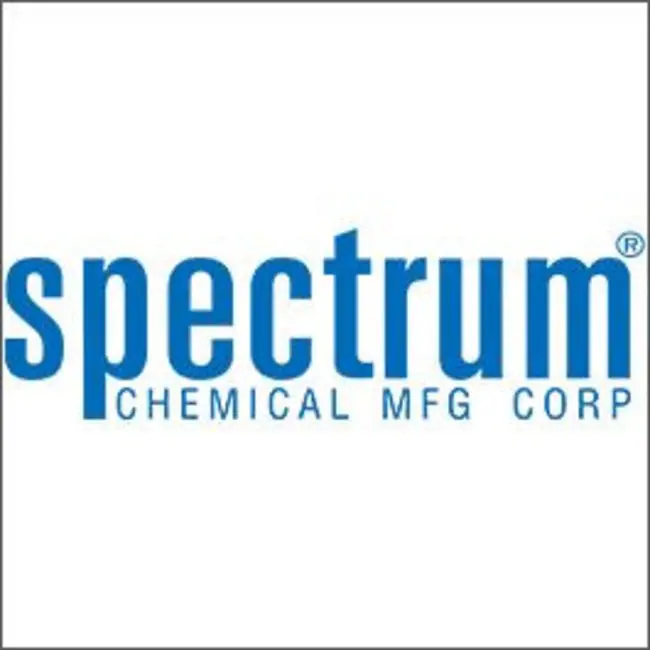Shop
Showing 157201–157250 of 279040 results
-

Igepal® ca-630
$32.83 Add to cart View Product DetailsIgepal® Ca-630
-

Igepal® ca-630
$50.37 Add to cart View Product DetailsNonionic non-denaturing detergent. For solubilizing membrane proteins. Chemically indistinguishable from Nonidet P-40
-

Igepal® ca-630
$119.22 Add to cart View Product DetailsIgepal® Ca-630
-
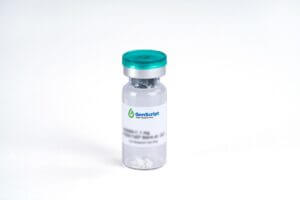
IGF-BP-2, His, Human
$1,863.00 Add to cart View Product DetailsIGF-BP-2, also known as Insulin-like growth factor-binding protein 2, IBP-2 and BP-2, is a cysteine-rich secreted protein belonging to the IGF-binding protein superfamily. It is expressed by the central nervous system, bone cells and reproductive tissues. IGF-BP-2 binds to both IGF-I and IGF-II, with a much higher binding affinity to IGF-II than IGF-I. IGF-BP-2 has been shown to inhibitand stimulate the growth promoting effects of IGFs, thus serving as a regulator for IGF distribution, function and activity.
-
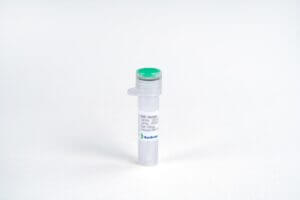
IGF-BP-2, His, Human
$51.75 Add to cart View Product DetailsIGF-BP-2, also known as Insulin-like growth factor-binding protein 2, IBP-2 and BP-2, is a cysteine-rich secreted protein belonging to the IGF-binding protein superfamily. It is expressed by the central nervous system, bone cells and reproductive tissues. IGF-BP-2 binds to both IGF-I and IGF-II, with a much higher binding affinity to IGF-II than IGF-I. IGF-BP-2 has been shown to inhibitand stimulate the growth promoting effects of IGFs, thus serving as a regulator for IGF distribution, function and activity.
-

IGF-BP-2, His, Human
$224.25 Add to cart View Product DetailsIGF-BP-2, also known as Insulin-like growth factor-binding protein 2, IBP-2 and BP-2, is a cysteine-rich secreted protein belonging to the IGF-binding protein superfamily. It is expressed by the central nervous system, bone cells and reproductive tissues. IGF-BP-2 binds to both IGF-I and IGF-II, with a much higher binding affinity to IGF-II than IGF-I. IGF-BP-2 has been shown to inhibitand stimulate the growth promoting effects of IGFs, thus serving as a regulator for IGF distribution, function and activity.
-

IGF-BP-3, Human
$2,018.25 Add to cart View Product DetailsIGF-BP3 is a 30 kDa cysteine-rich secreted protein. It is the major IGF binding protein present in the plasma of human and animals and it is also found in α-granules of platelets. In addition to its ability to modulate the activity of IGF-I and IGF-II, IGF-BP3 exerts inhibitory effects on follicle stimulating hormone (FSH) activity. Decreased plasma levels of IGF-BP3 often results in dwarfism, whereas elevated levels of IGF-BP3 may lead to acromegaly. The expression of IGF-BP3 in fibroblasts is stimulated by mitogenic growth factors such as Bombesin, Vasopressin, PDGF, and EGF.
-

IGF-BP-3, Human
$155.25 Add to cart View Product DetailsIGF-BP3 is a 30 kDa cysteine-rich secreted protein. It is the major IGF binding protein present in the plasma of human and animals and it is also found in α-granules of platelets. In addition to its ability to modulate the activity of IGF-I and IGF-II, IGF-BP3 exerts inhibitory effects on follicle stimulating hormone (FSH) activity. Decreased plasma levels of IGF-BP3 often results in dwarfism, whereas elevated levels of IGF-BP3 may lead to acromegaly. The expression of IGF-BP3 in fibroblasts is stimulated by mitogenic growth factors such as Bombesin, Vasopressin, PDGF, and EGF.
-

IGF-BP-4, His, Human
$1,863.00 Add to cart View Product DetailsInsulin-like growth factor-binding protein 4 (IGF-BP-4), also known as IBP-4, is a secreted glycoprotein belonging to the IGFBP family. IGF-BP-4 is produced by osteoblasts, epidermis, ovarian follicles and other tissues. It binds both insulin-like growth factor (IGF) I and II, and it circulates in the plasma in both glycosylated and non-glycosylated forms. IGF-BP-4 prolongs the half-life of the IGFs and has been shown to inhibit or stimulate the growth-promoting effects of the IGFs. Pregnancy Associated Plasma Protein A (PAPP-A) proteolytically cleaves IGF-BP-4 and reduces its affinity to bind IGFs, and thus serves as an important regulator of IGF-BP-4 function.
-

IGF-BP-4, His, Human
$51.75 Add to cart View Product DetailsInsulin-like growth factor-binding protein 4 (IGF-BP-4), also known as IBP-4, is a secreted glycoprotein belonging to the IGFBP family. IGF-BP-4 is produced by osteoblasts, epidermis, ovarian follicles and other tissues. It binds both insulin-like growth factor (IGF) I and II, and it circulates in the plasma in both glycosylated and non-glycosylated forms. IGF-BP-4 prolongs the half-life of the IGFs and has been shown to inhibit or stimulate the growth-promoting effects of the IGFs. Pregnancy Associated Plasma Protein A (PAPP-A) proteolytically cleaves IGF-BP-4 and reduces its affinity to bind IGFs, and thus serves as an important regulator of IGF-BP-4 function.
-

IGF-BP-4, His, Human
$224.25 Add to cart View Product DetailsInsulin-like growth factor-binding protein 4 (IGF-BP-4), also known as IBP-4, is a secreted glycoprotein belonging to the IGFBP family. IGF-BP-4 is produced by osteoblasts, epidermis, ovarian follicles and other tissues. It binds both insulin-like growth factor (IGF) I and II, and it circulates in the plasma in both glycosylated and non-glycosylated forms. IGF-BP-4 prolongs the half-life of the IGFs and has been shown to inhibit or stimulate the growth-promoting effects of the IGFs. Pregnancy Associated Plasma Protein A (PAPP-A) proteolytically cleaves IGF-BP-4 and reduces its affinity to bind IGFs, and thus serves as an important regulator of IGF-BP-4 function.
-

IGF-I, Bovine
$120.75 Add to cart View Product DetailsInsulin-like growth factor 1 (IGF-1), also called Somatomedin, is a hormone similar in molecular structure to insulin but has a much higher growth-promoting activity. IGF-1 consists of 70 amino acids in a single chain with three intramolecular disulfide bridges. IGF-1 may be a physiological regulator of [1-14C]-2-deoxy-D-glucose (2DG) transport and glycogen synthesis in osteoblasts. It is able to stimulate glucose transport in bone-derived osteoblastic (PyMS) cells and is effective at much lower concentrations than insulin, not only regarding glycogen and DNA synthesis but also with regard to enhancing glucose uptake. It may also play a role in synapse maturation.
-

IGF-I, Bovine
$43.13 Add to cart View Product DetailsInsulin-like growth factor 1 (IGF-1), also called Somatomedin, is a hormone similar in molecular structure to insulin but has a much higher growth-promoting activity. IGF-1 consists of 70 amino acids in a single chain with three intramolecular disulfide bridges. IGF-1 may be a physiological regulator of [1-14C]-2-deoxy-D-glucose (2DG) transport and glycogen synthesis in osteoblasts. It is able to stimulate glucose transport in bone-derived osteoblastic (PyMS) cells and is effective at much lower concentrations than insulin, not only regarding glycogen and DNA synthesis but also with regard to enhancing glucose uptake. It may also play a role in synapse maturation.
-

IGF-I, Bovine
$76.76 Add to cart View Product DetailsInsulin-like growth factor 1 (IGF-1), also called Somatomedin, is a hormone similar in molecular structure to insulin but has a much higher growth-promoting activity. IGF-1 consists of 70 amino acids in a single chain with three intramolecular disulfide bridges. IGF-1 may be a physiological regulator of [1-14C]-2-deoxy-D-glucose (2DG) transport and glycogen synthesis in osteoblasts. It is able to stimulate glucose transport in bone-derived osteoblastic (PyMS) cells and is effective at much lower concentrations than insulin, not only regarding glycogen and DNA synthesis but also with regard to enhancing glucose uptake. It may also play a role in synapse maturation.
-
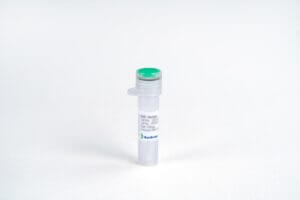
IGF-I, Human
$120.75 Add to cart View Product DetailsInsulin-like growth factor I (IGF-I) also known as Somatamedin C is a hormone similar in molecular structure to insulin. Human IGF-I has two isoforms (IGF-IA and IGF-IB) which are differentially expressed by various tissues. Mature human IGF-I shares 94% and 96% aa sequence identity with mouse and rat IGF-I, respectively. Both IGF-I and IGF-II (another ligand of IGF) can signal through the IGF-I receptor (IGFIR), but only IGF-II can bind the IGF-II receptor (IGFIIR/ Mannose-6-phosphate receptor). IGF-I plays an important role in childhood growth and continues to have anabolic effects in adults.
-

IGF-I, Human
$43.13 Add to cart View Product DetailsInsulin-like growth factor I (IGF-I) also known as Somatamedin C is a hormone similar in molecular structure to insulin. Human IGF-I has two isoforms (IGF-IA and IGF-IB) which are differentially expressed by various tissues. Mature human IGF-I shares 94% and 96% aa sequence identity with mouse and rat IGF-I, respectively. Both IGF-I and IGF-II (another ligand of IGF) can signal through the IGF-I receptor (IGFIR), but only IGF-II can bind the IGF-II receptor (IGFIIR/ Mannose-6-phosphate receptor). IGF-I plays an important role in childhood growth and continues to have anabolic effects in adults.
-

IGF-I, Human
$76.76 Add to cart View Product DetailsInsulin-like growth factor I (IGF-I) also known as Somatamedin C is a hormone similar in molecular structure to insulin. Human IGF-I has two isoforms (IGF-IA and IGF-IB) which are differentially expressed by various tissues. Mature human IGF-I shares 94% and 96% aa sequence identity with mouse and rat IGF-I, respectively. Both IGF-I and IGF-II (another ligand of IGF) can signal through the IGF-I receptor (IGFIR), but only IGF-II can bind the IGF-II receptor (IGFIIR/ Mannose-6-phosphate receptor). IGF-I plays an important role in childhood growth and continues to have anabolic effects in adults.
-

IGF-I, Mouse
$612.38 Add to cart View Product DetailsInsulin-like Growth Factor I (IGF-I) is a single chain 7 kDa growth-promoting polypeptide originally identified as somatomedin-c. It belongs to the IGF family of peptides, which also includes IGF-II and insulin. The gene expression of IGF-I is mainly regulated by Growth Hormone, and IGF-I executes its functions via signaling through transmembrane tyrosine receptors (IGF Receptors). Most circulating IFG-I is associated with the IGF Binding Protein 3 (IGFBP-3), and the IGFBPs may inhibit the actions of IGFs by competing against the IGF Receptors. IGF-I is active in post-natal and adult animals, and is crucial for somatic growth, as IGF-I null mice show marked retardation in utero. IGF-I is involved in carcinogenesis, and related to prostate cancer as well.
-

IGF-I, Mouse
$43.13 Add to cart View Product DetailsInsulin-like Growth Factor I (IGF-I) is a single chain 7 kDa growth-promoting polypeptide originally identified as somatomedin-c. It belongs to the IGF family of peptides, which also includes IGF-II and insulin. The gene expression of IGF-I is mainly regulated by Growth Hormone, and IGF-I executes its functions via signaling through transmembrane tyrosine receptors (IGF Receptors). Most circulating IFG-I is associated with the IGF Binding Protein 3 (IGFBP-3), and the IGFBPs may inhibit the actions of IGFs by competing against the IGF Receptors. IGF-I is active in post-natal and adult animals, and is crucial for somatic growth, as IGF-I null mice show marked retardation in utero. IGF-I is involved in carcinogenesis, and related to prostate cancer as well.
-

IGF-I, Mouse
$86.25 Add to cart View Product DetailsInsulin-like Growth Factor I (IGF-I) is a single chain 7 kDa growth-promoting polypeptide originally identified as somatomedin-c. It belongs to the IGF family of peptides, which also includes IGF-II and insulin. The gene expression of IGF-I is mainly regulated by Growth Hormone, and IGF-I executes its functions via signaling through transmembrane tyrosine receptors (IGF Receptors). Most circulating IFG-I is associated with the IGF Binding Protein 3 (IGFBP-3), and the IGFBPs may inhibit the actions of IGFs by competing against the IGF Receptors. IGF-I is active in post-natal and adult animals, and is crucial for somatic growth, as IGF-I null mice show marked retardation in utero. IGF-I is involved in carcinogenesis, and related to prostate cancer as well.
-

IGF-I, Rat
$612.38 Add to cart View Product DetailsInsulin-like Growth Factor I (IGF-I) is a single chain 7 kDa growth-promoting polypeptide originally identified as somatomedin-c. It belongs to the IGF family of peptides, which also includes IGF-II and insulin. The gene expression of IGF-I is mainly regulated by Growth Hormone, and IGF-I executes its functions via signaling through transmembrane tyrosine receptors (IGF Receptors). Most circulating IFG-I is associated with the IGF Binding Protein 3 (IGFBP-3), and the IGFBPs may inhibit the actions of IGFs by competing against the IGF Receptors. IGF-I is active in post-natal and adult animals, and is crucial for somatic growth, as IGF-I null mice show marked retardation in utero. IGF-I is involved in the carcinogenesis, and related to the prostate cancer as well.
-

IGF-I, Rat
$36.23 Add to cart View Product DetailsInsulin-like Growth Factor I (IGF-I) is a single chain 7 kDa growth-promoting polypeptide originally identified as somatomedin-c. It belongs to the IGF family of peptides, which also includes IGF-II and insulin. The gene expression of IGF-I is mainly regulated by Growth Hormone, and IGF-I executes its functions via signaling through transmembrane tyrosine receptors (IGF Receptors). Most circulating IFG-I is associated with the IGF Binding Protein 3 (IGFBP-3), and the IGFBPs may inhibit the actions of IGFs by competing against the IGF Receptors. IGF-I is active in post-natal and adult animals, and is crucial for somatic growth, as IGF-I null mice show marked retardation in utero. IGF-I is involved in the carcinogenesis, and related to the prostate cancer as well.
-

IGF-I, Rat
$76.76 Add to cart View Product DetailsInsulin-like Growth Factor I (IGF-I) is a single chain 7 kDa growth-promoting polypeptide originally identified as somatomedin-c. It belongs to the IGF family of peptides, which also includes IGF-II and insulin. The gene expression of IGF-I is mainly regulated by Growth Hormone, and IGF-I executes its functions via signaling through transmembrane tyrosine receptors (IGF Receptors). Most circulating IFG-I is associated with the IGF Binding Protein 3 (IGFBP-3), and the IGFBPs may inhibit the actions of IGFs by competing against the IGF Receptors. IGF-I is active in post-natal and adult animals, and is crucial for somatic growth, as IGF-I null mice show marked retardation in utero. IGF-I is involved in the carcinogenesis, and related to the prostate cancer as well.
-

IGF-I, Salmon
$1,138.50 Add to cart View Product DetailsInsulin-like growth factor 1 (IGF-1), also called Somatomedin, is a hormone similar in molecular structure to insulin but has a much higher growth-promoting activity. IGF-1 consists of 70 amino acids in a single chain with three intramolecular disulfide bridges. IGF-1 may be a physiological regulator of [1-14C]-2-deoxy-D-glucose (5DG) transport and glycogen synthesis in osteoblasts. It is able to stimulate glucose transport in bone-derived osteoblastic (PyMS) cells and is effective at much lower concentrations than insulin, not only regarding glycogen and DNA synthesis but also with regard to enhancing glucose uptake. It may also play a role in synapse maturation.
-

IGF-I, Salmon
$63.83 Add to cart View Product DetailsInsulin-like growth factor 1 (IGF-1), also called Somatomedin, is a hormone similar in molecular structure to insulin but has a much higher growth-promoting activity. IGF-1 consists of 70 amino acids in a single chain with three intramolecular disulfide bridges. IGF-1 may be a physiological regulator of [1-14C]-2-deoxy-D-glucose (5DG) transport and glycogen synthesis in osteoblasts. It is able to stimulate glucose transport in bone-derived osteoblastic (PyMS) cells and is effective at much lower concentrations than insulin, not only regarding glycogen and DNA synthesis but also with regard to enhancing glucose uptake. It may also play a role in synapse maturation.
-

IGF-I, Salmon
$232.88 Add to cart View Product DetailsInsulin-like growth factor 1 (IGF-1), also called Somatomedin, is a hormone similar in molecular structure to insulin but has a much higher growth-promoting activity. IGF-1 consists of 70 amino acids in a single chain with three intramolecular disulfide bridges. IGF-1 may be a physiological regulator of [1-14C]-2-deoxy-D-glucose (5DG) transport and glycogen synthesis in osteoblasts. It is able to stimulate glucose transport in bone-derived osteoblastic (PyMS) cells and is effective at much lower concentrations than insulin, not only regarding glycogen and DNA synthesis but also with regard to enhancing glucose uptake. It may also play a role in synapse maturation.
-

IGF-II, Human
$560.63 Add to cart View Product DetailsInsulin-like Growth Factor II (IGF-II) is a single chain 7 kDa polypeptide, and shares a high degree of homology with insulin. During circulation in vivo, IGF-II is complexed to high affinity binding proteins, IGF Binding Proteins (IGFBP), which act as circulating reservoirs, transport IGF-II, and prolong the half life of IGF-II. The receptors of IGF-II (IGFRs) are transmembrane tyrosine receptors, and are heterotetrameric consisting of two α-subunits and two β-subunits. IGFRs execute their role via intracellullar signaling molecules, such as IRS, shc, and PI3K. The functions of IGF-II include promoting cell survival, growth, proliferation, differentiation and motility. In particular, IGF-II promotes proliferation, inhibits death, and stimulates transformation in breast cancer cells.
-

IGF-II, Human
$43.13 Add to cart View Product DetailsInsulin-like Growth Factor II (IGF-II) is a single chain 7 kDa polypeptide, and shares a high degree of homology with insulin. During circulation in vivo, IGF-II is complexed to high affinity binding proteins, IGF Binding Proteins (IGFBP), which act as circulating reservoirs, transport IGF-II, and prolong the half life of IGF-II. The receptors of IGF-II (IGFRs) are transmembrane tyrosine receptors, and are heterotetrameric consisting of two α-subunits and two β-subunits. IGFRs execute their role via intracellullar signaling molecules, such as IRS, shc, and PI3K. The functions of IGF-II include promoting cell survival, growth, proliferation, differentiation and motility. In particular, IGF-II promotes proliferation, inhibits death, and stimulates transformation in breast cancer cells.
-

IGF-II, Human
$86.25 Add to cart View Product DetailsInsulin-like Growth Factor II (IGF-II) is a single chain 7 kDa polypeptide, and shares a high degree of homology with insulin. During circulation in vivo, IGF-II is complexed to high affinity binding proteins, IGF Binding Proteins (IGFBP), which act as circulating reservoirs, transport IGF-II, and prolong the half life of IGF-II. The receptors of IGF-II (IGFRs) are transmembrane tyrosine receptors, and are heterotetrameric consisting of two α-subunits and two β-subunits. IGFRs execute their role via intracellullar signaling molecules, such as IRS, shc, and PI3K. The functions of IGF-II include promoting cell survival, growth, proliferation, differentiation and motility. In particular, IGF-II promotes proliferation, inhibits death, and stimulates transformation in breast cancer cells.
-

IGF1 Rabbit pAb
$86.94 Add to cart View Product DetailsPolyclonal Antibodies
-

IGF1 Rabbit pAb
$86.94 Add to cart View Product DetailsPolyclonal Antibodies
-

IGF1 Rabbit pAb
$239.89 Add to cart View Product DetailsPolyclonal Antibodies
-

IGF1 Rabbit pAb
$239.89 Add to cart View Product DetailsPolyclonal Antibodies
-

IGF1 Rabbit pAb
$239.89 Add to cart View Product DetailsPolyclonal Antibodies
-

IGF1 Rabbit pAb
$86.94 Add to cart View Product DetailsPolyclonal Antibodies
-

IGF2 Rabbit pAb
$239.89 Add to cart View Product DetailsPolyclonal Antibodies
-

IGF2 Rabbit pAb
$239.89 Add to cart View Product DetailsPolyclonal Antibodies
-

IGF2 Rabbit pAb
$86.94 Add to cart View Product DetailsPolyclonal Antibodies
-

IGF2 Rabbit pAb
$86.94 Add to cart View Product DetailsPolyclonal Antibodies
-

IGF2BP1/IMP1 Rabbit mAb
$296.24 Add to cart View Product DetailsMonoclonal Antibodies
-

IGF2BP1/IMP1 Rabbit mAb
$119.14 Add to cart View Product DetailsMonoclonal Antibodies
-

IGF2BP1/IMP1 Rabbit mAb
$264.04 Add to cart View Product DetailsMonoclonal Antibodies
-

IGF2BP1/IMP1 Rabbit mAb
$103.04 Add to cart View Product DetailsMonoclonal Antibodies
-

IGF2BP1/IMP1 Rabbit pAb
$86.94 Add to cart View Product DetailsPolyclonal Antibodies
-

IGF2BP1/IMP1 Rabbit pAb
$239.89 Add to cart View Product DetailsPolyclonal Antibodies
-

IGF2BP1/IMP1 Rabbit pAb
$86.94 Add to cart View Product DetailsPolyclonal Antibodies
-

IGF2BP1/IMP1 Rabbit pAb
$239.89 Add to cart View Product DetailsPolyclonal Antibodies
-

IGF2BP2/IMP2 Rabbit mAb
$103.04 Add to cart View Product DetailsMonoclonal Antibodies
-

IGF2BP2/IMP2 Rabbit mAb
$264.04 Add to cart View Product DetailsMonoclonal Antibodies
-

IGF2BP2/IMP2 Rabbit pAb
$239.89 Add to cart View Product DetailsPolyclonal Antibodies
